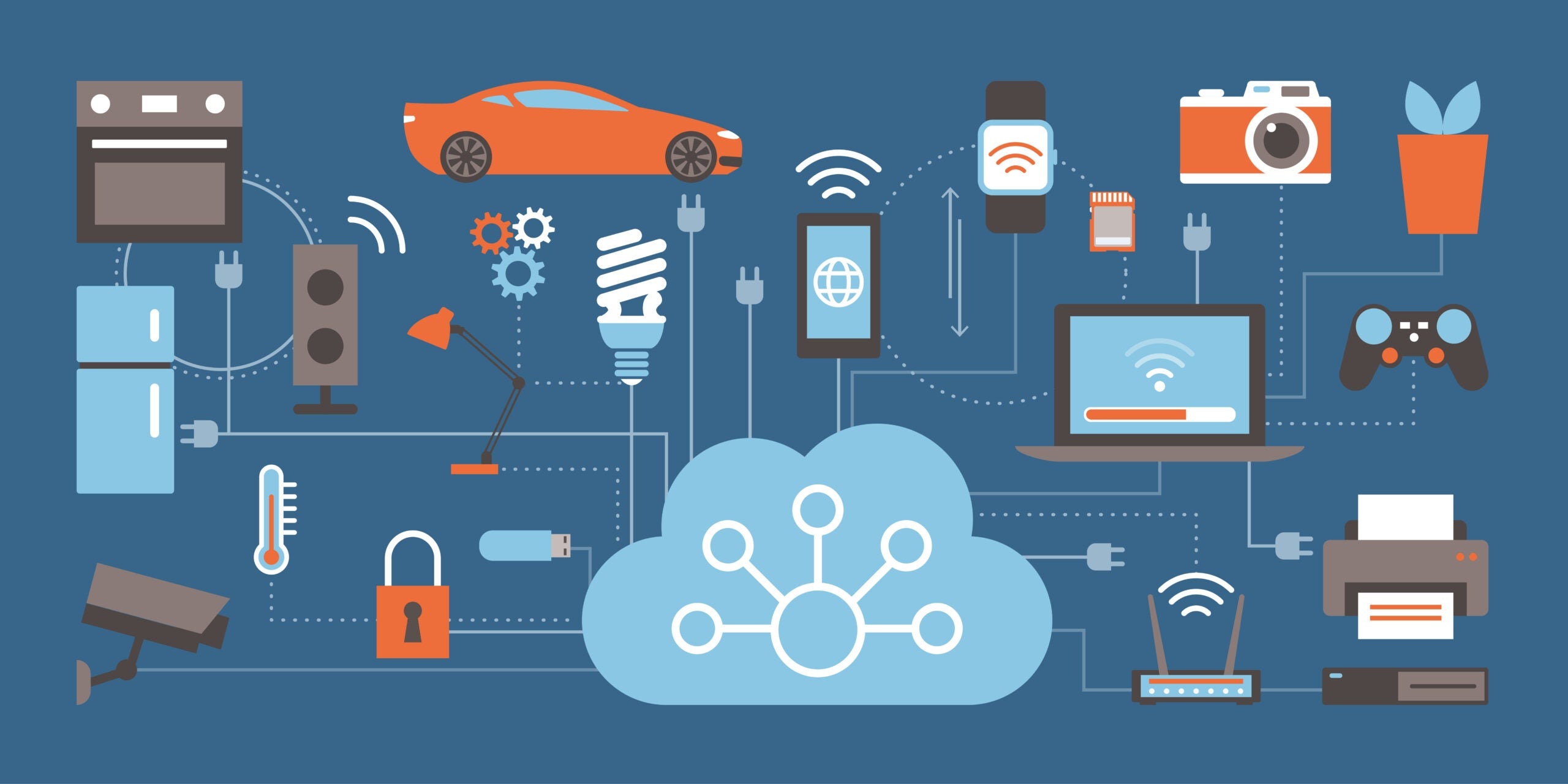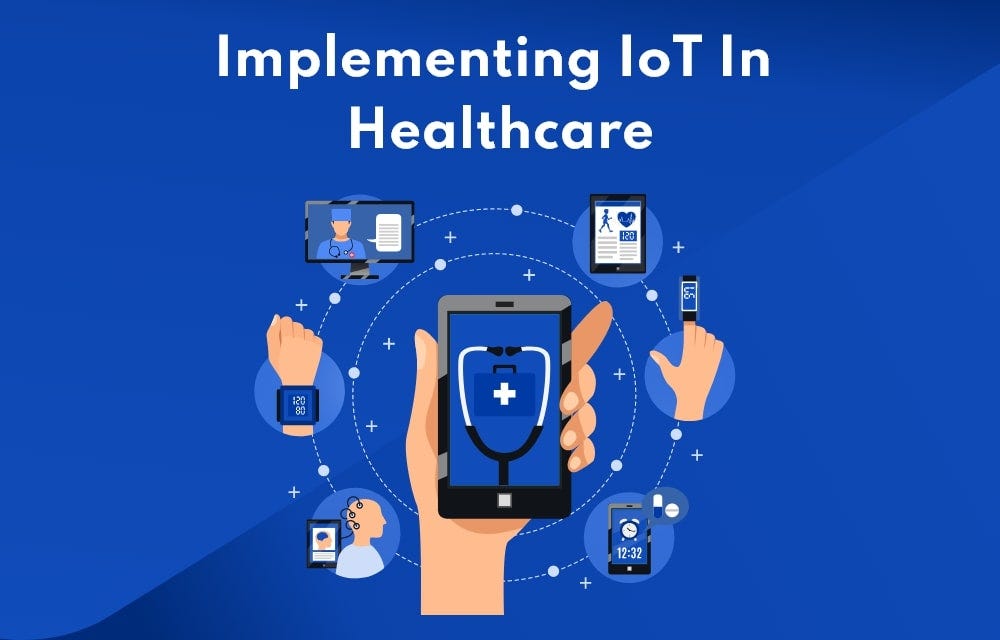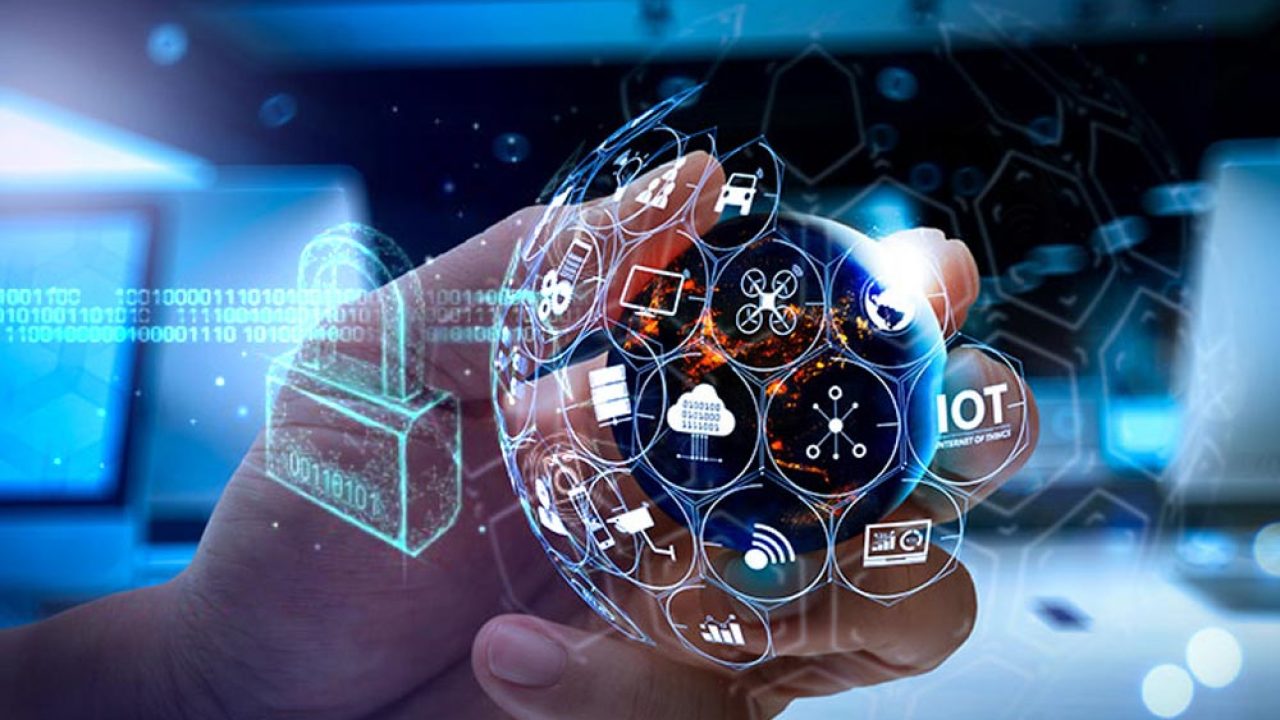IoT stands for ‘’Internet of Things’’ Internet of Things is the development of technology in which many gadgets are connected together through networking. In this all gadgets are connected together to transfer data to each other, which bring integration between all the devices. After the Internet of Things, there will be such smart houses in the future in which all the devices will be interconnected with each other.
Understanding IoT Development
IoT Development – It is used to transfer the data from one device to another device with the help of sensors, software and technology and it is used to speed up work in industries and organizations. The term Internet of Things was first used by Kevin Ashton.
IoT is a sensor of billions of smart devices that connect people, systems and other applications to collect and share data.
Example: Suppose you switched off the TV and door and went out of your house. In this situation, the combined artificial brain of the smart home will be there. He will bring this thing to your door and turn off the TV. This information will also come on your phone. This is the integration between all the technical journals.
Apart from this, in the future every large company will run on the Internet of Things. After the advent of the Internet of Things, our work will become much easier. After the advent of this technology, our standard of living will also become much higher.

Significance of IoT Development
IoT has the potential to transform many aspects of our lives, from smart homes and cities to industrial automation and healthcare. Here are some of the key reasons why IoT development is important.
Cost Saving: Cost savings can be achieved through IoT optimized resource utilization, energy efficiency and Improved learning materials.
Example: Using IoT sensors to monitor and control smart architecture lights, clusters and air conditioning, it is possible to reduce energy resources and save on utility bills.
Efficiency and Productivity: IoT development can help society and individuals to be more efficient and creative. IoT sensors can monitor machines, predicting maintenance needs, optimizing operation in real-time and process.
Safety and Security: IoT devices can help in safety and security across various industries. It can monitor and detect potential safety hazards, such as fire, smoke, gas leak and alert the relevant authorities before serious damage occurs.
Sustainability: IoT development can contribute to sustainability by helping reduce productive and energy resources. For example smart cities can use IoT sensors to monitor traffic, optimize public transportation systems.
Key Components of IoT system
Cloud: Role of cloud in the internet of things is prominent for delivering computing resources such as storage, databases, software etc. One of the main advantages of the cloud solution is that they are easily scalable which is a vital requirement for building an effective IoT system.
Connectivity: It is responsible for the communication within the IoT system and various technologies that are used to connect devices to the internet directly such as Wi-Fi, Bluetooth or satellite. The data that was gathered through the sensors is then transmitted over the internet by using one these technologies
Sensors/Devices: Firstly, sensors or instruments help in collecting very fine data from the surrounding environment. All of this collected data can vary levels of complexity, from a simple temperature monitoring sensor or a complex full video feed.
The most elementary step will always be to collect and collect data from the surrounding environment, whether it is a standalone sensor or multiple devices.
Data Processing: Once the data is collected and it reaches the cloud, the software performs processing on the received data.
This can range from something very simple, like checking that the temperature readings on appliances like Acs or heaters are within acceptable limits. It can also sometimes be very complex, such as using computer vision to identify objects on video.
Real World-Application and Case Studies
Smart Homes and City: Smart cities are designed to leverage the power of technology and data to improve the quality of life of citizens, enhance sustainability and streamline the delivery of essential services. It uses IoT devices such as connected vehicles, and homes to interact with smart city solutions.
IoT is a major driver of home automation. It empowers you to collect and monitor data on various aspects of life in real time. Whether on vacation or at work, you can manage your home at your fingertips with high security assurance.
- Kitchen Automation
- Security and Surveillance
- Control with your fingertips
- Robotic Control
- Smart Restroom
Healthcare- The IoT in the healthcare industry is on the verge of significant change with these new technologies. Hospitals and Healthcare providers are eager to embrace these innovations and make a positive impact on patient care.
Such heath technologies are used to diagnose illness, to monitor treatments, to assist disabled people and to intervene and treat illness, both acute and chronic.
IoT devices offer a number of new opportunities and healthcare to monitor patients as well as for patients to monitor themselves. The variety of wearable IoT devices provides an array of benefits and challenges,for healthcare providers and their patients alike:
Remote patient monitoring: With IoT, patients can be monitored remotely, allowing healthcare providers to keep an eye on their conditions and intervene when necessary. This will result in fewer hospital visits and readmissions, ultimately reducing healthcare costs.
Patient Healthcare – Wearable devices help people monitor health and medical conditions with real-time data. This monitoring has proven to be incredibly beneficial for many conditions including mental health problems and heart conditions.
Faster Disease Diagnosis- The ability of IoT devices to collect more data points on a regular basis enables providers to make more accurate diagnoses, in some cases before serious symptoms appear.

Industrial and Manufacturing:
IoT for predictive maintenance: Iot-based predictive maintenance involves the collection of machine data such as operating temperature, supply voltage, current and vibration through sensors and wireless transmission of the collected data to cloud-based centralized data storage platform in real time.
An IoT based software such as an intelligent factory app stores terabytes of data and runs machine learning algorithms on several computers parallel for forecasting potential hazards and predicting timelines when industrial equipment can potentially fail.
Supply Chain Management: IoT – enabled inventory train system provide advanced chain managers, including distribution and transportation corporation .This helps them track documentary films up the supply chain to ensure end to end use and limit avoidable shortage in different orders.
Safety Enhancement- IoT named characters can help identify security identities, monitor the performance of documents, and provide real-time help in case of an emergency. Company safety has been revolutionized in Stockholm and Supermarkets, resulting in safer working environments and better coaching.
Challenges and Consideration in IoT Development
Security and Privacy- In our opinion, security is of utmost importance which requires IoT detection. Those working on your IoT are typically not security experts, which opens your copd to many types of fraud and unauthorized access to your devices.
Privacy Concern- If the quartet feels their personal data is at risk, they may be reluctant to own an IoT device. This lack of analysis has led to the rise of these technological tools, as this increases the possibility of unauthorized access to personal data.
Network Security- To transmit and receive data, a network connection to the IoT device is required. The connection will be lost and you will lose the ability to use the mobile. Although many IoT gaming solutions exist, they are all best suited for different types. The solution you choose severely limits what you can install in the institution. This is an ongoing IoT challenge organization.
Increment in Cost- With the deployment of sensors in a common everyday item, the value increases. Although attractive, IoTs are still considered a luxury, so there are fewer customers willing to pay large amounts for these laptops.
Processors have to take this parameter into account when designing products. They have to manage to maintain the price of chips under a certain range to remain open to a larger market base.
Weak Password- IoT devices are commonly shipped with default passwords that many users fail to change, giving cyber criminals easy access .In other cases, users create weak passwords that can be guessed.
Security Breaches and their implementation
The Internet of Things (IoT) involves billions of devices being connected to the internet and transmitting all kinds of data, from temperature to cameras. However, there is growing concern that IoT company enterprises do not have strong security measures in place. Not surprisingly, this lack of security has already led to serious security breaches globally.
Credential Security- IoT licensee credentials should be updated if possible. Each license must have a unique nomination. This helps prohibit credential-based Massachusetts prohibition.
Device Authentication- IoT is connected to each other, to servers and to various networks. It’s necessary to authenticate each connected joint to ensure that they do not admit any unauthorized activity.
For the most part, this type of license requires enrollment by the manufacturer.
Encryption- Encryption must be combined with authentication to fully prevent on-path attacks. Otherwise, the attacker could set up separate encrypted connections between one IoT device and another, and neither would be aware that their communications are being intercepted.
Interoperability and standards- The Internet of Things (IoT) has bought a new era of technological development that has brought together various devices and partners to form an interconnected network. The need for interoperability has increased due to IoT telecom networks.-the ability of different devices and equipment to work together. In this, I will discuss the beginning of achieving IoT interoperability, the development of standards and testing programs to ensure compatibility across motorcycles and the devices and gadgets that result from it.
Increased Efficiency and Productivity- When journals and systems can communicate with each other and share data information, businesses can automate many of their business and operations. This reduces the need for industrial intervention and increases solar plants and machinery.
Better Customer Experience- Interoperability can provide a seamless gaming experience, as the book and system can work together to provide more memory and a personalized experience. For example, a smart home system that can communicate with a home security that can communicate with a home security system can provide a more secure and authenticated experience for the homeowner.
Increased Innovation- Interoperability can invite innovation by being able to coordinate different resources and solutions to create new products and services. This can lead to the development of new markets and business opportunities as well as the creation of new markets and business opportunities.
Better Customer Experience- Interoperability can provide a seamless experience, as the book and system can work together to provide more memory and a personalized experience. For Example, a smart home system that can provide a more secure and authenticated experience for the homeowner.
Current standard and protocols in the IoT ecosystem
IoT (Internet of Things) is a set of standards and standards deployed that enable data communication and digitalization of IoT networks. This panel defines documents and formats for data journal, global search, project, and security in the IoT environment.
The Internet of Things is rapidly growing, and with it comes a wide variety of protocols. These protocols define how devices communicate with each other, and they are essential for the development of successful IoT applications.
MQTT- It stands for Message Queuing Telemetry Transport. It is a lightweight protocol that is well-suited for devices with limited resources. MQTT is a publish/subscribe protocol, which means that devices can subscribe to topics and receive messages that are published to these topics.
CoAP- It stands for Constrained Application Protocol. This makes it a more complex protocol than MQTT, but it can be more efficient in some cases. It is a protocol that is designed to be more efficient than HTTP for IoT applications.
AMQP- IT stands for Advanced Message Queuing Protocol. It is used for financial trading and other mission-critical applications and it is used for financial trading and other mission -critical applications.
LoRaWAN- It stands for lower-power wide area networking protocol. It is a wireless communication protocol designed for long-range, low-power IoT applications. It is mostly suitable for smart cities, agriculture, and battery efficiency.
LWM2M- It stands for Lightweight Machine-2-Machine. It is defined as devices to connect to the internet and exchange data. It can be mostly used for a wide variety of IoT applications.

Scalability and Maintenance
The IoT landscape is rapidly expanding, demanding robust scalability solutions. The device network is underlined, and key strategies to address scalability challenges are highlighted.
Connectivity- Reliable connectivity is paramount to the success of IoT. Cellular coverage, addressing satellite connections, and ensuring global support are important considerations.
Elasticity- Fluctuations in data load require elasticity-both expanding and reducing capacity as needed. The system must be designed to handle different demands efficiently.
Device Management- Efficiently managing a multitude of devices involves activation, monitoring, maintenance, updates. Robust device management system systems with features like over-the-air updates are crucial.
Maintaining and Updating IoT System
It is the system of managing all devices within an IoT system. The management includes:
1.Monitoring of usage and performance metrics
2.Remote troubleshooting and error handling
3.Patch security holes
4.Monitoring and tracking IoT devices and their states
5.Diagnosis of the health of devices within an IoT system
The Future of IoT Development
The Internet of Things (IoT) is a network of physical objects connected by electronics, sensors, and software. These connected devices, also called nodes, exchange data over the internet.
IoT technology can be used in sectors like manufacturing,agriculture,healthcare, transportation,media/advertising,retail,water and waste management power distribution etc.
It is also used in various applications like smart home, smart parking, smart traffic lightning, smart solar panels etc. This is essential to achieve higher productivity, efficiency, safe work environments and lower carbon emissions in industry and other contexts. Healthcare and manufacturing are sectors where many startups are working extensively on smart solutions. Several companies offer cloud services in India, reducing the costs of smart solutions for smart cities. Furthermore, data security is a very challenging task in IoT. The advancement in Artificial intelligence and machine learning has made the automation of IoT devices easy. Basically, AI and ML programs are combined with IoT devices to give them proper automation and the future of IoT in healthcare, automotive, and agriculture industries.
Impact on society and economy
The Internet of Thing(IoT) has had a significant impact on society in different ways:
- Smart homes and offices can save energy costs
- Smart lightning and auto-sensing of roads as well as control over traffic signal
- Smart automobiles that can provide assistance when needed, helping to control the vehicle’s speed based on traffic and environment conditions.
- Offering better security by constant surveillance.
- Remainders of daily tasks such as payment of utility bills.
The impact of the IoT on the economy is expected to be significant. Here are some of the ways IoT is likely to impact the economy:
Job Creation- The development and deployment of IoT technology is expected to create new job opportunities in areas such as data analysis, engineering, software development.
Cost Savings- It can be helped in business to reduce their costs by improving their reducing downtime, supply chain management and optimizing their energy usage.
Conclusion- IoT will be bound to be an effective technology in the future, and IoT enabled devices are likely to be all-pervasive from industry to households. The Future of the scope of IoT is bright and varied and it is only a matter of time before the above applications of the technology are realized.
While we come to the end, IoT holds the lives of the human being straightforward and satisfactory. it has made the lives of the people very easy. The Internet of things has improved safety and security, so we should be concerned while giving the details on the Internet platform.

